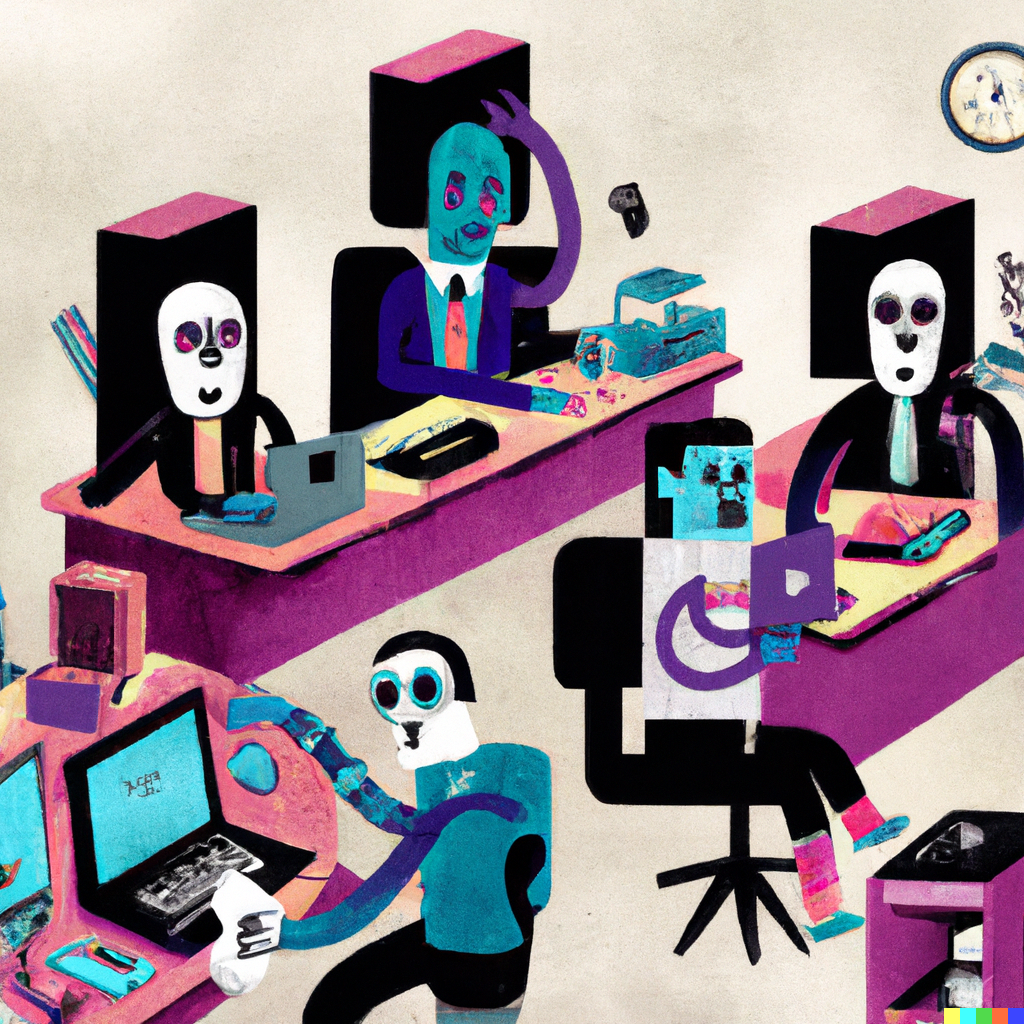Ah, Social Media. Is it the perfect tool to push the boundaries of freedom of speech… or is it the devil’s own work? Not quite a newspaper and more than correspondence, social media has the power to push a message or image around the world at the speed of light and spread faster than a virus can replicate itself. Damaging comment, once out in the wild, is unstoppable. Like it or not, social media is here to stay.

As with the brouhaha earlier this year between Gary Lineker and the BBC has shown, businesses need to apply plenty of thought as to the controls they put in place to protect both the organisation and those it employs and works with.
For Beverley Smith, an associate solicitor at ESPHR, social media is a double-edged sword for employers. As she explains, “businesses cannot afford not to have a social media presence to promote their brand.” She firmly thinks that “without adequate protection to guard their business and reputation against abuse, the misuse of social media can pose a significant risk for employers, whether inside or outside the workplace.”
The risks to a business
What social media has done well is the blurring of private and public worlds and the key risk for an employer is reputational damage. However, as Smith points out, employers shouldn’t react if a post is just disagreeable. She says this because “employment tribunals look closely at an employer’s justification for taking disciplinary action based on damage to its reputation or bringing it into disrepute.” It’s all about evidence rather than speculation.
Then there’s abusive and offensive comments made by one employee about another that may well constitute harassment and, as such, be actionable under the Equality Act 2010. As Smith notes, “harassment or bullying online can also lead to a claim under the Protection from Harassment Act 1997… there must have been more than one occasion of the harassment or bullying.”
Indeed, Mark Stevens, a senior associate at VWV LLP, thinks the same and remarks that while employees may connect with co-workers in the online world to enhance relationships, “these online interactions can create the potential for inappropriate behaviour and online bullying and harassment. Often the forum that such activity takes place in is not accessible or monitored by the employer, making it difficult to police.”
Worryingly, Smith tells that employers can be held liable for their employee’s actions, as was the case for Carphone Warehouse, which “was held to be vicariously liable when an employee’s colleagues stole his phone and posted that he was gay on Facebook. He was not gay, but that was irrelevant as they made the posting at work and during working hours.”
Stevens has seen the same and cites Facebook and Twitter as two well-known platforms where users can express their personal views for others to see. He has witnessed first-hand, that employees not only have the ability to post controversial comments and opinions, and often do so, but such messages that can very quickly spread. Worse, he says that “where inappropriate, controversial or offensive comments or viewpoints are shared, members of the public could very easily associate those comments or points of view with the company which employed that individual, thus damage its reputation.”
He continues by recognising that businesses use social media as a tool for marketing. However, because the line between personal and professional accounts can become blurred “employers should ensure that employees with responsibility for running a business social media account use it in a professional way, and not as though it is their own personal account.”
Then there’s the issue of potential breaches of confidentiality. Here Smith says that “apart from express restrictions, employees owe implied contractual duties of fidelity and confidentiality to their employer. Posts on a public forum about the employer’s business can breach those duties.”
And let’s not forget the risk to productivity with staff spending too long on social media sites and the risk that former employees use social media to bypass post-termination restrictions.
Case law
It’s interesting that both Smith and Stevens highlight a fair amount of case law around the subject.
Notably, Smith comments that social media cases have fallen considerably over the last five years, “which may be testimony to the measures employers are putting in place to guard against its misuse.” However, she says that those cases that have come before the tribunals have resulted in conflicting decisions, reflecting how fact-specific these types of cases are.
In August 2021, Shailesh Rathod, a salesman at Pendragon’s Porsche Sutton Coldfield site, who suffered racist abuse but was sacked after ‘joining in’ with it – a judge ruled that he was unfairly dismissed. Various forms of poor treatment, including jokes and memes were shared on a sales team WhatsApp group, and a Facebook post depicted a Sikh couple with a new-born baby along with a poor-taste joke. He won compensation.
Employee private accounts
It’s unreasonable for employers to ban staff from having private social media accounts – it’s part of life. However, employers need a social media policy to minimise risks and strengthen the employer’s position.
In fact, Smith thinks that “a policy will send a clear signal about the employer’s expectations for employee use of social media. At a minimum, it will make its employees aware that posting on social media or personal blogs, even in their spare time, may give grounds for disciplinary action, including dismissal.”

Stevens agrees, saying that such “a policy should set boundaries and define acceptable and unacceptable use and behaviour as this will prevent any ambiguity around social media use amongst employees.”
Training is the key to bringing a policy to life and should involve employees and HR to monitor and enforce the policy. To Smith this means a consistent approach to treating harassment and bullying online with the response to harassment and bullying in other contexts.
Where employees are monitored in the workplace this should not go further than necessary and employers should avoid implementing restrictions which are intrusive or unreasonable – it is a balancing act that employers must carefully undertake.
On this Stevens warns that human rights legislation provides individuals with the right to respect for private and family life and “correspondence and this could be contravened by monitoring.” He suggests that employees could argue that scrutinising their social monitoring postings could be discriminatory – “proportionality and consistent treatment of employees is therefore important.”
He also recommends to employers who do not want employees accessing social media accounts – at all – in the workplace that they apply technical measures to block access to these sites from company devices and its network. He says that “firms should be aware that an employee can still access social media whilst in the workplace by just using their own devices.”
Sanctions for employees that break the rules
So, what can an employer do if an employee breaks the rules? In answer, Smith says to treat it as any other case of misconduct. She sees cases falling into two categories – inappropriate behaviour by an employee that is exposed through social media, or derogatory comments about the employee’s workplace posted on social media.
She says that “where work-related misconduct comes to light via social media, the employer may legitimately take disciplinary action against an employee, including dismissal – even where the conduct occurs outside of work. She adds that “if something is posted, the key question is ‘is it relevant to the job and reliable?’ and whether the employee’s conduct goes to the heart of the employer/employee relationship or affects their ability to perform their role.”
Smith cautions, however, that “in terms of reputational damage, employers will rarely, if ever, have grounds to take action against employees for activity on the employee’s own
equipment outside of working hours which did not risk or cause damage to the employer’s reputation.”
Writing a social media policy
So, a clear and well-publicised social media policy will help an employer justify any disciplinary action they take. But how to write it?
At its simplest, Smith recommends that “a social media policy should establish clear written rules on the use of social media in the workplace, explain clearly what type of private social media use is covered by the policy, warn staff that breaches of the policy could lead to disciplinary action including dismissal and refer to any other relevant policies such as disciplinary, bullying and harassment and IT communication policies.”
Typical features that Stevens would include would detail how employees should portray themselves online; what social media accounts are deemed acceptable, especially in the workplace; whether personal social media accounts can be used during working hours; the difference in using company social media accounts and personal social media accounts; and guidance on how employee’s activity on personal social media accounts can be linked back and associated with the company.

One clear rule for Smith is to forbid derogatory, abusive or critical comments about the employer, its products or services or its clients: “It is also useful to warn employees that comments made on social media should be treated as public rather than private.”
When it comes to monitoring, the policy should detail rules around accessing social media sites at work and information about what monitoring the employer may undertake and the use of that information.
Because monitoring employees involves processing personal data, Smith warns that the Data Protection Act 2018 and UK GDPR applies. She says that “the ICO Employment Practices Code gives guidance on monitoring at work, the core principles of which are that worker’s
private lives extend to the workplace and employees have an expectation of privacy, so if monitoring is undertaken, an impact assessment should be carried out first, and employees should be notified about the monitoring.”
As for enforcing the policy, unless an employee is aware of the consequences of inappropriate social media postings, any dismissal will likely be unfair even though some might argue today that this is more obvious than it once was.
Stevens takes a moment to remind that employers will likely have other policies that may have a bearing on a social media policy. As a result, he advises that these other policies, say, disciplinary and grievance, bullying and harassment and data protection, are “all updated in line with any social media policy that is written.”
Can an employer overstep the mark?
Situations are rarely black and white and so employers shouldn’t take a heavy-handed approach to enforcement and, as Smith says, are “unlikely to find favour in any subsequent Employment Tribunal where the employee merely ‘let off steam’ by posting an inoffensive comment on Facebook after a difficult day at work that did not mention the employer and was only read by a handful of people.”
Even so, employers need to distinguish between material that either defames the employer or breaches confidence and disparages the employer or fellow employees on the one hand, or that which the employer simply doesn’t care for on the other. For Smith, it’s all about material that is damaging to the employer – if it’s not then “it is unlikely that the relationship of trust and confidence will be so seriously undermined as to permit the employer to dismiss.”
Ultimately, she says that an Employment Tribunal will consider factors such as the nature of the employee’s job, their seniority, the seriousness of the alleged misconduct, the nature of the employer’s organisation, the terms of the employer’s social media policy, the disclosure of any confidential information, the risk of reputational damage to the employer, the likely impact on the employee’s job and any mitigating factors, such as the employee’s service record and cooperation during the disciplinary process.
In summary
Case law has demonstrated that a social media policy is central protecting an organisation. However, policies, while useful, shouldn’t seek to shackle or be too restrictive. Employers should not be overly concerned about the odd bit of gossip or frustration that gets aired on an employee’s social media account; those with draconian provisions in place may find staff looking for work elsewhere.











Go to comments